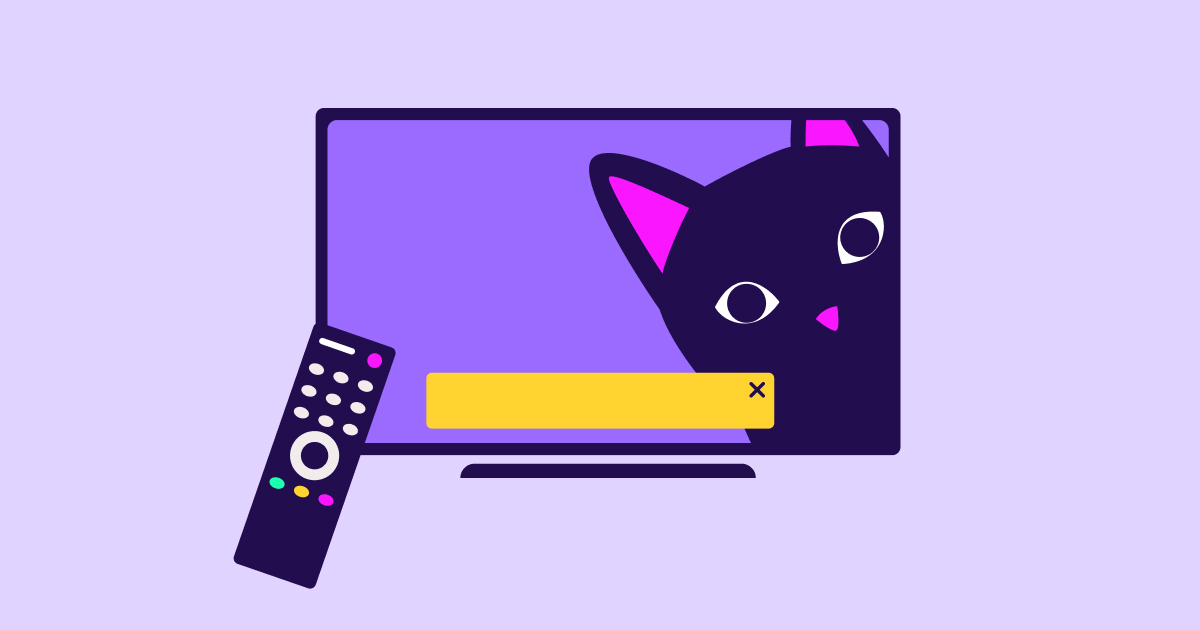
Creative strategist: What is it and why you [may] need it
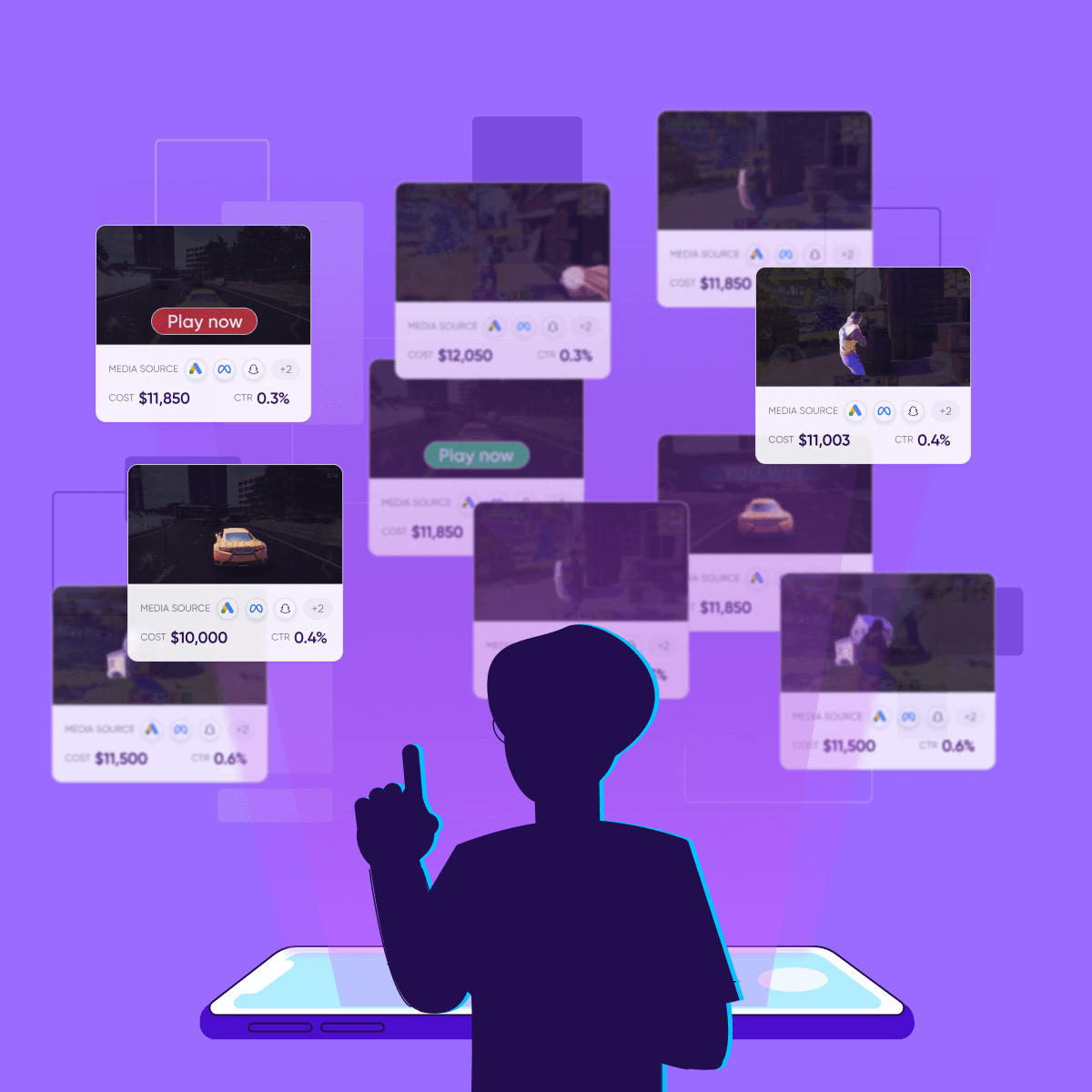
Let’s be clear: creative is the #1 lever in user acquisition. But how can you find success in such a hyper competitive environment if you don’t have the right creative role, the most efficient process, and the right analytics to measure and optimize?
A hit or miss approach won’t cut it anymore.
To help us answer these questions and many more, we talked with Marcus Burke, an independent growth consultant who has been working in the industry for over 11 years, starting in games and then subscription apps like Blinkist and Tandem. One of his specialties? You guessed it, creative strategy!
AppsFlyer: Let’s start with a seemingly simple but often misunderstood term: creative strategy. What exactly is it?
Burke: Basically, it’s a process that takes a rather messy task of creative ideation and streamlines it so that you can, over time, get better at it.
As you scale your marketing budgets, you don’t want to be dependent only on someone having a great idea that works. You want a process that spits these ideas out over and over again while ensuring you can improve over time.
It’s also vital that once you’ve learned something, the entire company also knows about these learnings, so that they can be applied elsewhere.
We’re hearing more and more about this role called the creative strategist. Can you talk about this position and its responsibilities? What does a good creative strategist actually do?
First of all, every company probably has someone, even though they might not have a profile with that title. Someone is usually responsible for this area if you’re running paid UA or optimizing your App Store presence.
In most cases, this person has a mixed skill set of being analytical, knowing how these platforms work and also a strong eye for design so that they can combine these worlds.
Basic knowledge of copywriting, editing, and design is important so that you’re actually able to create MVP ads or wireframes for a team that then does the creative execution. On top of that you’ll have to manage the process behind it all — this will make or break your strategy.
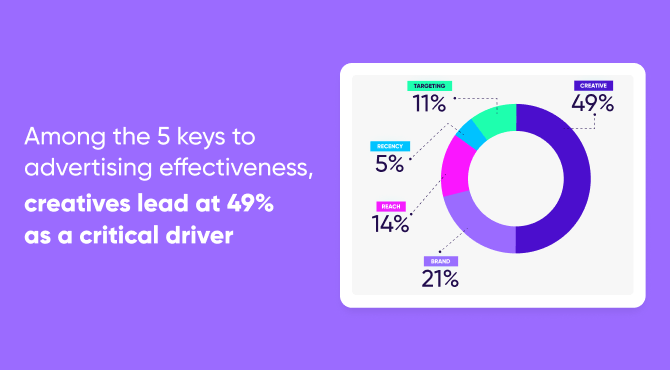
Creative has always been important of course, but nowadays, even more so with privacy changes and the fact that there’s just a lot less down funnel data signals and you have to go up the funnel where creative is and to get that data. Do you think this is the time for apps to consider this as a separate role?
Now is the time to consider this as a separate role because the creative game for most apps has been subpar. There was always this weird misalignment between how apps treated their creative process and how much they’ve spent. I would see apps scaling to like a million, 2 million a month on discovery channels, but keeping their production costs very, very low.
Making this a separate role puts the priority that it needs to have. It ensures you’re not just doing things randomly but rather running a reliable and smooth process with someone at the helm.
SKAN really threw a wrench into the whole system. What we’re dealing with now is that we’re unable to measure creative performance long term. Yet early metrics take a lot longer. And they’re harder to analyze because the data is delayed from your actuals and don’t match on a day to day basis.
So you want to step up your game. You don’t just want to throw creatives into a platform hoping for something to win, but not knowing why. Because you’re going to waste a lot of budget with a hit or miss approach under these circumstances. So hiring a creative strategist or at least defining that role clearly within your company ensures you get to that level of sophistication which then really allows you to still excel under SKAN.
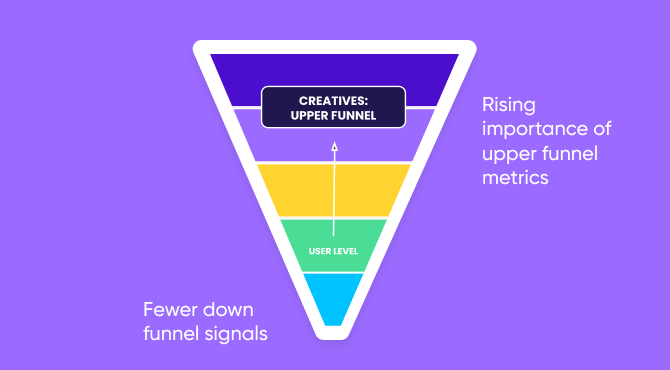
What are the data points you think are important to measure?
It’s super important that you have a very good understanding of the platform metrics. What I see is that still many, many advertisers test a creative, and then just look at the results to see if it worked or not. But I hardly ever test a video ad that’s a winner in the first iteration.
So you really want to look into what’s the hook rate (3s video views / impression), what’s the hold rate (thruplays / impressions), what’s the click through rate (outbound CTR), and then the result rate (conversion event / installs) so that you have this mini funnel based on platform metrics.
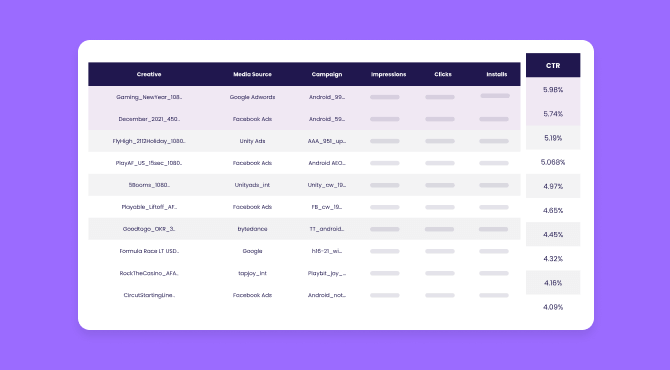
Maybe you have a creative that is doing an amazing job hooking people, but then they drop off quickly afterwards. Another video might be amazing at holding people while the hook isn’t as strong. Learn from these patterns to improve your creative over time. Usually it will take 2 to 3 iterations to find major success.
Embrace this and make sure that you’re not throwing creative ideas away after one try because you want to consistently learn from them.
When it comes to headline and body texts on Meta, I barely ever have the time to test them because I’m already creating so many different video iterations. This is a job I hand off to Meta’s automation, report on the results on a monthly basis and then iterate. These micro-variations are something I feel AI can really help support me with.
For example, I’m not going to test a creative with three different backgrounds just to figure out if red is better than blue. I’d still love to know which colors or other details correlate with higher value for my app. Yet I want to be able to focus on the big swings as a creative strategist.
This is where I’d love to see tech help me, while I’m going to test totally different audiences, angles, creative formats.
When it comes to team structure, which team handles the creative strategy?
Looking at the teams that I’ve worked with or that I worked in, creative strategy was usually handled by performance marketing. Mostly people working on discovery channels like Meta ads, Snapchat were the ones to drive this forward because they needed tons of creatives to make their channels work.
But this often created a problem — everyone was kind of doing their own thing. What’s happening more and more these days is that this is really looked at in a unified way so that you don’t have these different learnings floating around for different channels because, in the end, learnings apply anywhere.
If you find a new ad angle that works or a new audience that you unlocked because you now talk to them in a certain way about the outcomes your app drives for them— these learnings should apply not just to Google or Meta. You should test them in all channels, your App Store, your website, and even your product.
A major breaking point I see in team structure occurs when the design team or the video editing team acts as a service provider to performance marketing. This always created inefficiencies and tension because designers didn’t have a good understanding of the hypothesis and data behind what you’re trying to achieve. I saw so many teams failing at this, trying to marry these 2 teams while keeping them separate.
I believe it makes a lot of sense for teams to integrate design and video editing with your user acquisition department. And as I’ve said, a creative strategist or UA manager who can actually create MVP versions of ads will really help bring these functions even closer together so nothing gets lost in translation when briefing new ads.
Which apps should hire a creative strategist?
I think it’s mainly the size of the app and its goals. If you’re just starting off and dabbling in a couple of different channels, trying to figure out where to spend some budget so that you can get users into the app — a creative strategist isn’t a good idea. In this phase your focus should be product improvements rather than continuously spending, optimizing and scaling paid media budgets.
When you’re getting closer to a good payback period, perhaps you’re able to convert users so that you get your money back within three months, six months, and feel comfortable with spending a consistent budget. This is where you definitely want to think about who’s going to take care of the creative process.
That doesn’t necessarily mean hiring someone who is a pure creative strategist. Just make sure someone in the team owns this process. Otherwise you tend to default to this hit or miss approach where ads are created randomly because someone saw a competitor ad that was interesting or had a good idea. This isn’t predictable and you won’t be able to scale. The process behind it becomes more important than someone having great ideas.
Also, let’s not forget that many apps now create influencer or creator style videos, which means someone has to communicate with these people as you scale and you’re probably working with hundreds of them. That requires a different skill set compared to when you’re scaling through 2D animations.
So based on your vertical and the content types you find working, you want to consider: (1) Do we already have the skill set in-house? (2) Can the person take it over? (3) Should we hire someone and what should that look like? That’s also why it makes sense to have the first testing done, get the MVP process up and running, and then you can figure out what a creative strategist would look like for your team based on the first data points and learnings.




